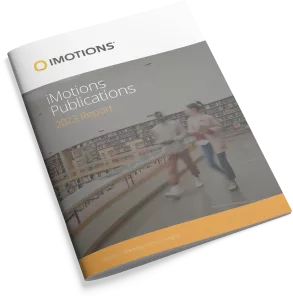-
ROGER:Visualizing Voice Records to Enhance Team Communication Trainings for High-Stress Situations
Effective communication is essential in high-stress environments but stress often disrupts the flow of information and leads to miscommunication. While scenario-based training exercises are widely used, post-hoc reflection and analysis of verbal interactions remain challenging due to overlapping speech, limited analysis time, and the dynamic nature of these situations. This paper introduces ROGER, a novel […] -
Minds at Work: A Design for an Experimental Approach to Assessing Cognitive Abilities in Construction
The construction industry relies heavily on the cognitive abilities of its workforce to manage intricate tasks and ensure project success. Research indicates that when the cognitive demands of tasks outweigh workers’ cognitive capabilities, this imbalance can significantly compromise worker performance and safety. Consequently, it is crucial to understand workers’ cognitive capabilities and assign tasks accordingly. […] -
Calorie labels on restaurant menus: What do consumers see, think, and decide? Eye-tracking and interview insights
This study explores consumers’ reactions and responses to calorie labelling of restaurant menus. A convenience sample of 36 participants aged 18 and older, who dine out at least monthly, engaged with menus using eye-tracking technology to measure involuntary attention. Participants visited the lab twice: first with a menu without calorie labelling and, at least two […] -
Biometric responses to green and complete street elements in Devens, Massachusetts
Understanding human responses to the built environment is vital for effective urban design and sustainable transportation planning. This study presents a methodology that employs eye-tracking technology and facial expression analysis to compare conscious and unconscious reactions to street designs featuring differing levels of Green and Complete Street (GCS) elements. Conducted in Devens, Massachusetts, the research […] -
The impact of information overload on Gen Z iPhone-user product preferences and visual attention: a biometric approach
Purpose This paper aims to examine the influence of information load and brand familiarity on consumer preferences, attention and cognitive processes in the context of smartphone product decision-making. Design/methodology/approach Using the theoretical lens of bounded rationality, this paper tests a series of hypotheses on the impact of high and low information load and brand familiarity […] -
Machine Learning Techniques to Improve theCognitive Workload Classification UsingMultimodal Sensors’ Data
Using machine learning applied to multimodal physiological data allows the classification of cognitive workload (low, moderate, or high load) during task performance. However, current techniques, such as multisensor data fusion (e.g. electroencephalogram, heart rate, eye movements, and other physiologicalsignals), suffer from excessive dimensionality, intersubject variability, imbalanced feature vectors, and poor data alignment between sensors. This […] -
Interictal eye movement alterations in migraine with aura: impact of perceptual and cognitive load during reading
Background Migraine with aura (MwA) is a common neurological disorder often accompanied by visual and cognitive difficulties, including impaired attention and reading. Although previous studies have examined oculomotor function in migraine using specific and highly controlled paradigms, findings have been mixed, and eye movements during more natural tasks like reading remain understudied. The aim of […] -
GUI Evaluation using Eye Tracking: Optimizing Instructor Station for Night Vision Training in Aviation
This paper presents a case study usability evaluation of a graphical user interface (GUI) used in the Virtual Terrain Image Generation System (VTIGS) developed by AMST Systemtechnik GmbH. The GUI is used by instructors to configure night vision training scenarios for pilots using Night Vision Goggles (NVG). However, many instructors are non-aviation professionals. This study […] -
Gaze Attention Estimation for Medical Environments
Gaze attention estimation is the task that aims to understand where each person is looking in each scene. In this study, we introduce a new annotated dataset that is derived from medical simulation training videos, capturing diverse and authentic clinical scenarios from a practical medical environment and annotated by the ground truth data from eye-tracking […] -
The Force of Habit: Comparing Graphical User Interfaces of Popular Operating Systems Using Eye-Tracking Analysis
Background:. Usability plays an important role in user experience and directly influences users’ satisfaction and overall perception of the IT solution. A combination of subjective and objective evaluation methods can increase the overall usability assessment. Methods: This paper presents a comparative analysis of eye-tracking and survey data that provided a comparison of the graphical user […]
Research Report 2024
In-depth look at the scientific landscape as powered by iMotions software, showcasing groundbreaking research and the impact of our tools in various scientific and industrial fields.

iMotions Science Resources
Looking for white papers, validation reports or research show casing iMotions Multimodal capabilities?
Share Your Research

850+ universities worldwide with an iMotions human behavior lab
73 of the top 100 highest ranked universities
710+ published research papers using iMotions
iMotions is used for some of the most interesting human behavior research studies carried out by top researchers around the world. Contact us to have your publication featured here.
The authors of these publications have used iMotions as a software tool within their research.
“Software should be cited on the same basis as any other research product such as a paper or a book; that is, authors should cite the appropriate set of software products just as they cite the appropriate set of papers” (Katz et al., 2020).
We therefore encourage you to cite the use of iMotions where appropriate.
How to cite iMotions
APA
iMotions (10), iMotions A/S, Copenhagen, Denmark, (2024).
Note: adjust the version and year where relevant.
5 Most Popular Blogs
Publications
Read publications made possible with iMotions
Blog
Get inspired and learn more from our expert content writers
Newsletter
A monthly close up of latest product and research news


